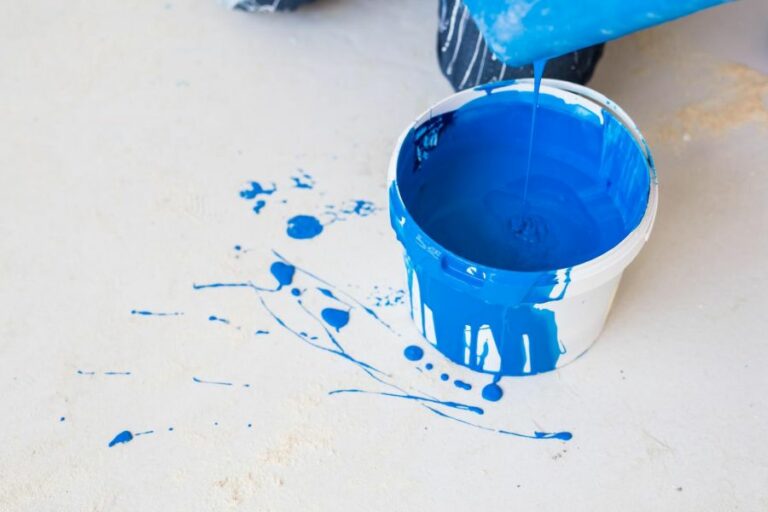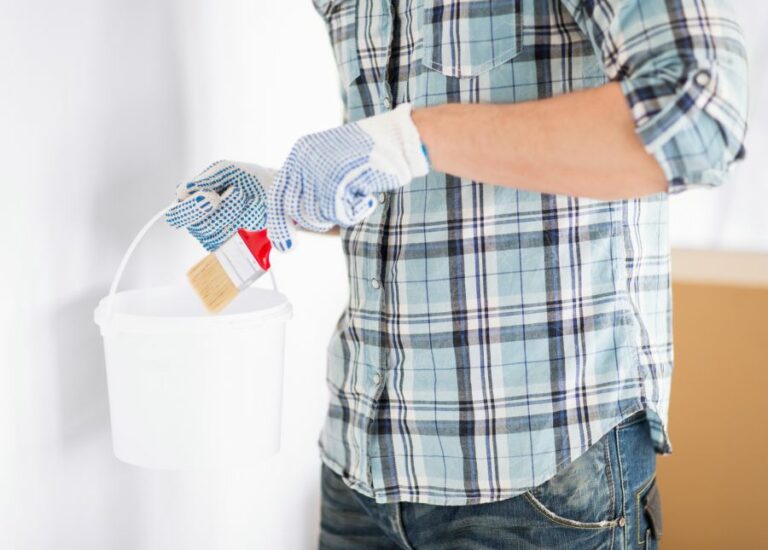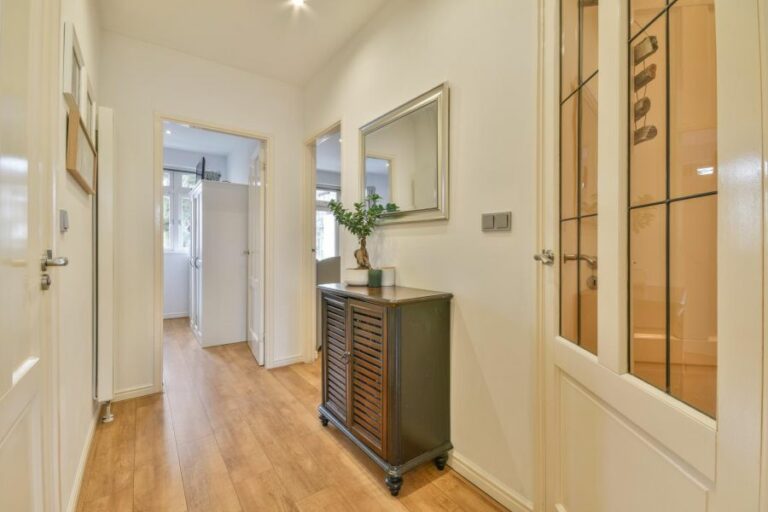Choosing Indoor Painting Primer, 25 Things You Should Know
Choosing the right indoor painting primer can make all the difference in achieving a stunning and long-lasting paint job. Luckily, you’ve come to the right place for expert guidance on this essential step! Let’s dive into selecting the perfect primer for your specific needs and ensuring a flawless finish in your home.
Choosing indoor painting primer:>
To choose the right indoor painting primer, consider factors like surface material, existing surface condition, paint compatibility, and environmental concerns. Understand the main types of primers, including oil-based, latex (water-based), and shellac, and their specific uses. Choose a primer compatible with your paint type and suitable for the surface you’re working on. Opt for low-VOC or zero-VOC primers for better air quality.

Ready to revamp your walls but unsure of which primer to choose for your indoor painting project? Fear not. We have more tips and insights to share! Continue reading to learn about selecting the perfect primer for a flawless finish.
Contents
- 1 Selecting the Right Primer for Indoor Painting
- 2 Identifying the Ideal Interior Primer for Your Needs
- 3 Importance of Paint Primer Brand Selection
- 4 Top Drywall Primer Recommendations for Painting
- 5 Primer Application: A Crucial Step for Interior Wall Painting
Selecting the Right Primer for Indoor Painting
A high-quality indoor painting primer is essential for laying the foundation for a flawless and long-lasting paint job. With a myriad of options available in the market, it can be overwhelming to choose the appropriate primer for your project.
• Understanding the Purpose of Primer
Primer serves as a preparatory coating layer applied before the paint to ensure better adhesion, durability, and coverage. It also seals the porous surfaces, preventing any damage due to moisture and ensuring consistent, even color application.
– Types of Primer
Understanding the different types of primer and their specific uses is crucial in selecting the best primer for your project. These are the three main categories of primer:
1. Oil-Based Primers
These primers are compatible with most surfaces and paint types, providing excellent adhesion and stain-blocking capabilities. Oil-based primers work well with unfinished wood, steel, metal, and surfaces that require a high degree of durability.
However, they have a strong odor and require ample ventilation during application. For more information, visit the Environmental Protection Agency’s Guide to Indoor Air Quality.
2. Latex (Water-Based) Primers
Latex primers are popular due to their low odor, easy application, and quick drying time. They work well on most interior surfaces, including previously painted surfaces, such as drywall, plaster, and wood.
However, latex primers may not provide the same level of stain-blocking and adhesion as oil-based primers.
3. Shellac Primers
Shellac primers excel in stain-blocking and odor-sealing, making them ideal for restoration projects and surfaces with severe stains, such as water or smoke damage.
However, shellac primers have a strong odor, require alcohol-based solvents for cleanup, and may be less versatile than oil-based or latex primers.
• Factors to Consider When Choosing Primer
Consider the following factors to determine the best primer for your indoor painting project.
– Surface Material
Different surfaces require specific types of primer for optimal results. For instance, oil-based primers are recommended for unfinished wood, while latex primers work well on drywall, plaster, and wood.
– Existing Surface Condition
Consider the current condition of the surface. If the surface is heavily stained or requires significant repair work, a shellac primer may be necessary. On the other hand, if the surface is mostly clean and in good condition, a latex primer would suffice.
– Paint Compatibility
It is crucial to choose a primer that is compatible with the type of paint you plan to use. For instance, it is generally recommended to use latex-based primers with latex paint and oil-based primer with oil paint.
However, there are exceptions, and some primers are compatible with multiple paint types, so always check the label for specific recommendations.
– Environment and Safety
If you are concerned about air quality and environmental factors, opt for low-VOC (volatile organic compounds) or zero-VOC primers, which emit fewer harmful chemicals during application and drying. Look for products that carry the Green Seal certification or similar third-party endorsements.
• Tips for Priming Your Indoor Space
Now that you have chosen the best primer for your project, follow these tips for a successful application:
- Clean the Surface: Remove dirt, dust, and debris from the surface before applying the primer to ensure proper adhesion.
- Repair Damages: Fill any cracks or holes with patching compound and sand the surface smooth to create a uniform, even surface for the primer.
- Tint the Primer: If you are using a dark paint color, consider tinting the primer to a similar shade to improve paint coverage and achieve a consistent finish.
- Apply Primer with Quality Tools: Use high-quality brushes or rollers for a smooth, even primer application.
- Allow Proper Drying Time: Follow the manufacturer’s recommendations for drying time between applying primer and paint to ensure optimal adhesion and durability.
By considering the factors mentioned above and following the tips provided, you can confidently select the right primer for your indoor painting project to achieve professional, long-lasting results.
Identifying the Ideal Interior Primer for Your Needs
• The Importance of a Good Interior Primer
Before diving into the various types of interior primers and their benefits, it’s essential to understand the vital role that they play in any painting project. Primers create a smooth, even surface for paint to adhere to, ensuring optimal coverage and prolonging the durability of the paint job.
In addition, using a primer can help to hide imperfections and stains, block odors, and minimize color bleeding from underlying paints or materials.
With so many primer options available, selecting the right one for your particular project may seem overwhelming.
• Matching Primers with Surfaces
– Drywall Primers
Drywall primers are designed specifically for use on new, untreated drywall surfaces. These primers are formulated to seal porous surfaces evenly and allow for uniform coverage when applying paint.
Not only does this result in a professional-looking finish, but it also saves time and money otherwise spent on additional coats of paint.
One highly recommended drywall primer is PVA (Polyvinyl Acetate) Primer, which is known for its excellent adhesion and easy application. It is widely used by both DIY enthusiasts and professional painters.
– Masonry Primers
Masonry primers are made to adhere to and seal porous surfaces like concrete, brick, and plaster. These primers are essential because unsealed masonry surfaces can absorb moisture, leading to paint failure and potential structural damage.
When selecting a masonry primer, look for one with alkali resistance since high alkalinity levels may deteriorate the binder in paint, resulting in peeling and blistering. Also, make sure the primer is well-suited for your project’s particular type of masonry material.
– Wood Primers
Primers specifically formulated for wood surfaces are designed to fill in the natural pores found in wood, ensuring a smooth and uniform finish.
In addition, these primers help prevent the bleeding of resins, stains, and knot holes that can occur when painting over untreated wood, which can be especially problematic with soft or porous woods like pine or cedar.
An excellent option for wood surfaces is a shellac-based primer, which provides fantastic adhesion, stain-blocking, and drying capabilities.
– Metal Primers
Metal surfaces require primers that offer excellent adhesion and corrosion resistance. For most types of metal, choose an alkyd or oil-based primer, which provides a durable bond, prevents rust, and ensures a smooth surface for painting.
However, opt for an acrylic-based primer for aluminum and galvanized metals, specifically designed to bond with these surfaces and prevent paint peeling.
• Primer Finishes and Additional Considerations
– Primer Sheens
Primer finishes, or “sheens,” range from flat/matte to high gloss. Generally, flat or eggshell primers are suitable for most projects, as they do not reflect light, making imperfections less noticeable.
However, satin or semi-gloss primers may be preferable in high-moisture areas, like kitchens or bathrooms, as they provide a more durable and water-resistant finish.
– Odor and VOC Levels
Some primers can emit strong odors or high levels of volatile organic compounds (VOCs), leading to poor indoor air quality and potential health concerns for sensitive individuals. Low-VOC or zero-VOC primers are available to minimize these issues while still offering excellent performance and coverage.
– Tinted and Colored Primers
Tinted primers can be especially beneficial when painting a surface with a significantly different color or when using deeper, more saturated paint colors. By applying a tinted primer that closely matches the final paint color, you can achieve better color accuracy and coverage with fewer coats of paint.
• In Conclusion
Selecting the right primer for your interior painting project is crucial to ensure a professional-looking, long-lasting finish. By considering the specific material, finish, and additional project needs, you can find the best primer to achieve your desired results.
For further guidance on primers, the EPA provides useful resources on environmentally friendly and low-VOC options.
Importance of Paint Primer Brand Selection
When embarking on a painting project, whether it’s an interior wall or an exterior surface, one question often surfaces: “Does it matter what brand of paint primer you use?”
• Importance of Choosing the Right Paint Primer Brand
Paint primer plays a crucial role in the overall quality and longevity of your paint job. It enhances the durability of the paint, ensures proper adhesion, and creates a smooth and consistent finish.
Additionally, it can inhibit the growth of mold and mildew on your surfaces, keeping your space looking clean and fresh.
Choosing the right brand of paint primer is essential because different brands offer varying levels of quality, coverage, and performance. Opting for an inferior brand can result in various issues, such as peeling or flaking paint, surface discoloration, and a lack of durability.
Therefore, it’s important to invest in a trusted brand that is known for its high-quality products, ensuring a long-lasting and professional-looking finish on your painting projects.
• Key Factors to Consider When Selecting a Paint Primer Brand
1. Type of Surface
Different primer brands perform better on specific surfaces. For example, some primers are designed for use on bare wood, while others are formulated for masonry, metal, or drywall.
Considering the type of surface you plan to paint will help you narrow down your options and select a suitable primer brand catering to your project’s requirements.
2. Interior vs. Exterior
Certain primer brands excel in indoor applications, while others are designed for outdoor use. Interior primers are formulated to provide a smoother surface for topcoats, hide surface imperfections, and block stains.
On the other hand, exterior primers are specifically tailored to withstand harsh weather elements and protect the surface from moisture, humidity, and UV rays. Therefore, selecting a brand that excels in either interior or exterior applications is crucial to the success of your painting project.
3. Coverage
The ability of a primer to cover and seal surfaces effectively is critical in achieving a uniform finish. High-quality paint primer brands will typically offer better surface coverage, allowing you to use less product while still achieving the desired result.
Always check the product information to determine the recommended coverage rate of a specific primer brand.
4. Environmental Impact
Some paint primer brands adopt eco-friendly practices and manufacture products with low VOC (volatile organic compound) levels, making them safer for both the environment and the user.
If you prioritize sustainable and environmentally friendly products, consider brands with low- or zero-VOC primers that also meet performance and durability standards.
5. Price
Paint primer prices can vary significantly between brands. While it may be tempting to opt for the most cost-effective option, it’s important to remember that cheaper brands might compromise on quality and performance.
Ideally, look for a well-reviewed, reasonably priced brand that delivers a good balance between affordability and quality.
• Expert Recommendations
Below are some paint primer brands recommended by professionals based on their overall performance and reputation in the industry.
1. Zinsser
Zinsser is known for its range of high-quality primers, suitable for a wide variety of surfaces, including wood, metal, masonry, and drywall. Their bonding and stain-blocking capabilities are impressive, and the brand also offers a selection of low-VOC and zero-VOC products.
2. KILZ
KILZ is another popular primer brand known for its excellent coverage and adhesion properties. Their product line includes primers specifically designed for controlling mold and mildew, blocking stains, and sealing surfaces with high moisture levels.
3. Benjamin Moore
Benjamin Moore offers a range of premium-quality primers for both interior and exterior applications. Their products are renowned for their durability, coverage, and environmentally friendly formulations.
4. Sherwin-Williams
Sherwin-Williams is a well-established name in the paint industry, offering a diverse selection of primers for various surfaces and purposes. Their products boast a good balance between performance and price, making them a popular choice among professionals and DIYers alike.
• In Summary
The brand of paint primer you choose can have a significant impact on the success of your painting project, affecting factors such as adhesion, durability, and coverage. By considering the type of surface, intended application, coverage requirements, environmental impact, and price.
Our expert recommendations include Zinsser, KILZ, Benjamin Moore, and Sherwin-Williams, all known for their outstanding performance, quality, and versatility.
Ultimately, investing in a trusted paint primer brand will not only save you time and money in the long run but also ensure a professional-looking finish that stands the test of time.
Top Drywall Primer Recommendations for Painting
As a professional painter, I’m often asked what is the best primer for drywall before painting. The answer is that it depends on various factors, such as the type of paint being used, the condition of the drywall, and the overall desired finish.
• Types of Drywall Primers
There are several types of primers available in the market, each with their specific purposes and advantages.
– PVA Drywall Primer
PVA (Polyvinyl Acetate) drywall primer is specially formulated for use on new or unfinished drywall surfaces. It helps in sealing the absorbent surface of the drywall, providing a consistent base for the topcoat.
PVA drywall primers are the most affordable option and are widely recommended for new construction projects.
– All-Purpose Primer
All-purpose primers are suitable for a variety of surfaces, including drywall, wood, and masonry. They offer adhesion, stain-blocking, and sealing properties. These primers are generally more expensive than PVA primers but can save time and effort if you are working on a project with a mix of surfaces.
– High-Build Primer
High-build primers are designed to help in leveling and smoothing out uneven surfaces, such as those with texture or damaged drywall. They are thicker than standard primers and may require a specific spray application method. High-build primers are recommended when dealing with drywall repairs or textures.
– Stain-Blocking Primer
Stain-blocking primers are ideal for surfaces with water, smoke, or other stubborn stains. These primers are designed to prevent the stains from bleeding through the paint and becoming visible on the surface.
Stain-blocking primers also offer excellent adhesion and are suitable for glossy surfaces or hard-to-paint materials like metal.
• Factors to Consider When Choosing a Drywall Primer
– Surface Condition
The condition of the drywall is a critical factor when choosing the appropriate primer. New or unfinished drywall requires a PVA primer, while damaged or textured surfaces may benefit from the additional thickness provided by a high-build primer.
– Topcoat Compatibility
It’s essential to select a primer that is compatible with the type of paint you plan to use. For instance, if you’re using latex paint, consider using a water-based primer like PVA or an all-purpose primer. For oil-based paints, an oil-based primer is recommended.
– Stain-Blocking Requirements
If the drywall has stubborn stains, such as smoke or water damage, a stain-blocking primer is necessary to prevent these marks from showing through the final paint job. This type of primer often provides better adhesion and is suitable for use on glossy surfaces.
• Application Tips and Techniques
To achieve the best results with your drywall primer, follow these tips and techniques:
- Proper Surface Preparation: Ensure the drywall surface is clean, dust-free, and free of any loose or peeling paint. This ensures a better bond between the primer and the wall.
- Tinting the Primer: Tinting the primer with a small amount of topcoat paint can help improve the color coverage and reduce the number of coats required.
- Adequate Drying Time: Allow the primer to dry completely before applying the topcoat. Drying times vary depending on the type of primer used and the environmental conditions.
- Even Application: Apply the primer in a consistent, even layer using a brush, roller, or sprayer, ensuring full coverage of the surface.
In conclusion, choosing the best primer for your drywall before painting depends on your specific project and requirements.
PVA primers are ideal for new drywall, all-purpose primers provide versatility, high-build primers are suitable for textured or damaged surfaces, and stain-blocking primers tackle stubborn stains.
Always consider factors such as surface condition, topcoat compatibility, and stain-blocking requirements when selecting the appropriate primer.
Primer Brand | Type of Primer | Available Sizes | Key Features |
|---|---|---|---|
Rust-Oleum Zinsser Bulls Eye 1-2-3 | Water-based | 1 quart, 1 gallon | Adheres to various surfaces, fast-drying, low odor |
KILZ PVA Drywall Primer | Polyvinyl acetate (PVA) | 1 gallon, 5 gallons | Seals porous surfaces, easy to sand, low VOC |
Benjamin Moore Fresh Start | Water-based | 1 quart, 1 gallon | High-hiding formula, excellent adhesion, quick drying |
Sherwin-Williams Preprite Problock | Oil-based | 1 gallon | Seals porous surfaces, excellent adhesion, stain-blocking |
Primer Application: A Crucial Step for Interior Wall Painting
• The Importance of Primer
Primer is a vital component in the painting process because it serves as the foundation upon which your paint will adhere. It also helps to create a smoother and more even surface for your paint to bond.
Using a primer not only improves the overall appearance of your paint job, but it can also increase its longevity while helping to hide small imperfections.
Many people question if it is necessary to use a primer before painting interior walls. The short answer is: it depends. In some cases, it is essential to use a primer before painting to ensure that you achieve the best results.
In other instances, forgoing a primer can save you time and money without sacrificing the quality of your paint job.
• When You Should Definitely Use Primer
– Unfinished Surfaces
If you are painting a wall that is unpainted or has exposed drywall or plaster, it is crucial to use a primer. Unfinished surfaces can be highly porous, leading to uneven absorption of the paint.
A primer helps to seal the surface and provide a uniform base for the paint to adhere, leading to a smoother and more even coat.
– Stain Blocking
If your walls have stains, such as watermarks, ink, or grease, using a primer can help prevent these stains from bleeding through your new paint. Choose a high-quality stain-blocking primer, such as shellac or oil-based primer, to ensure that these stains do not reappear over time.
– High-Gloss Surfaces
If you are planning to paint over a high-gloss finish, applying a primer is essential. High-gloss surfaces can be challenging for the paint to adhere to, leading to peeling or chipping over time. A primer helps to create a more receptive surface for the paint to bond, ensuring a more durable finish.
– Changing Colors
If you are drastically changing the color of your walls, using a primer can help to provide a clean slate. A primer will assist in hiding the existing color, making it easier to achieve the desired shade in fewer coats of paint. This is particularly important when transitioning from a dark to a light color or vice versa.
• When You Can Skip the Primer
– Same or Similar Color
If you are repainting a wall with the same or very similar color, you can often skip the primer. The fresh paint will cover the existing color and provide a new, uniform finish.
– Paint and Primer in One
Some paint products are labeled as paint and primer in one. These products are designed to eliminate the need for separate primer applications while still providing the benefits of a primer. If you are using one of these products, you may not need to apply a separate primer.
– High-Quality Paint
If you are using high-quality, self-priming paint, you may not need to apply a separate primer. High-quality paints are formulated to provide excellent adhesion and coverage, even without a primer.
Keep in mind that this might not apply in cases where stain blocking or covering a high-gloss surface is necessary.
• Tips for Using Primer Effectively
- Choose the Right Type: There are various types of primer available, including oil-based, latex, and shellac. Different primers offer different benefits and may be preferable for specific surfaces. Consult a professional or knowledgeable paint store employee to help you choose the right type of primer for your project.
- Allow for Proper Drying Time: Follow the manufacturer’s recommendations for drying time between applying the primer and applying the paint. This will help ensure proper adhesion and long-lasting results.
- Proper Surface Preparation: Before applying primer, ensure that your walls are clean, dry, and free from any dust, dirt, or grease. Proper surface preparation is essential for achieving a successful paint job.
In conclusion, using a primer before painting interior walls can lead to a higher quality paint job with increased longevity. However, it is not always necessary, and you may be able to achieve excellent results without using a separate primer.
Evaluate your specific project needs and choose the appropriate course of action accordingly.







